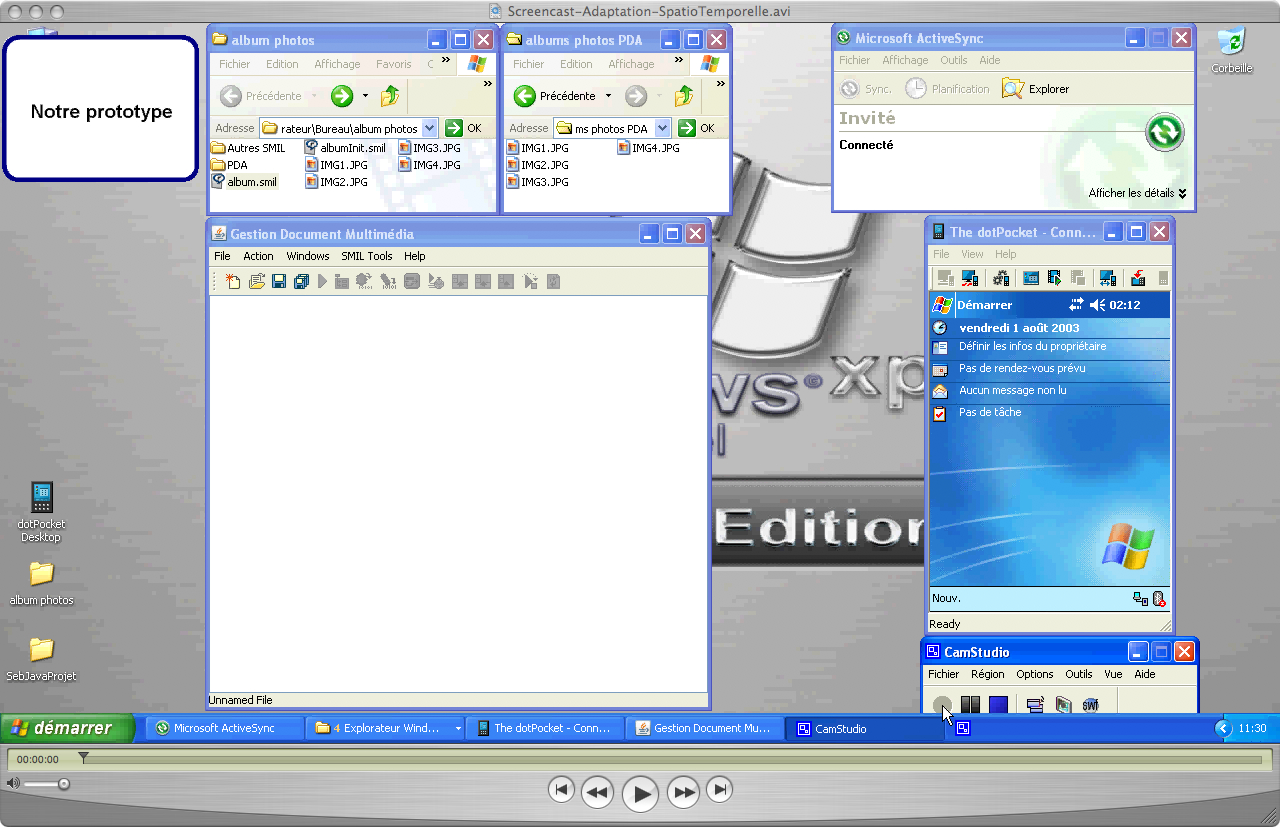I hold my Ph.D. degree from Joseph Fourier University and the French National Institute for Research in Computer Science and Control in May 2008. My thesis topic was about semantic adaptation of multimedia documents. I did this Ph.D. under the joint supervision of Jérôme Euzenat (EXMO team) and Nabil Layaïda (WAM team).
Research interests:
- Web standards (e.g., XML, SMIL, SVG)
- Web Semantic technologies (e.g., example related to my Ph.D. subject concerning multimedia)
- Pervasive computing (e.g., J2ME, CC/PP profile)
- Knowledge representation (e.g., semantic description of multimedia documents wih relation graphs)
- Constraint programming (e.g., search algorithms, optimizations)
Semantic adaptation of multimedia documents
Abstract
A multimedia document combines text, image, sound and video technologies. Currently, multimedia documents may have to be executed on multiple devices such as mobile phones, PDAs, desktop computers, set-top boxes, etc. Hence, usage and platform diversity requires document adaptation according to execution contexts, sometimes unpredictable at design time.
We propose to abstract from format specific details by defining a structure which expresses a set of multimedia objects and the relations between them. These relations can be described qualitatively and may be temporal, spatial, hypermedia and spatio-temporal-hypermedia. This document abstraction captures document semantics because it is able to cover all the potential executions of the document. In this context, adapting amounts to find a set of executions as close as possible to potential ones which satisfy adaptation contraints imposed by the target device. For that purpose, the relations contained in the document abstraction are modified in order to satisfy these adaptation constraints. We show how to achieve this convincingly on all the document dimensions.
In order to show the applicability of our framework, we implement a prototype which adapts the temporal, spatial and hypermedia dimensions of SMIL documents. We develop specific efficient techniques for the temporal and spatial representations. Moreover, we explored other approaches such as considering multimedia object deletion.
Jury
- Joëlle Coutaz, referee, Laboratoire Informatique de Grenoble
- Michel Crampes, referee, Ecole des Mines d'Alès
- Jérôme Euzenat, advisor, INRIA Grenoble Rhône-Alpes
- Mohand-Saïd Hacid, referee, Claude Bernard University of Lyon
- Nabil Layaïda, co-advisor, INRIA Grenoble Rhône-Alpes
- Frank Nack, examiner, Amsterdam University
Prototype screencast
We propose, in the example below, a demonstration of our SMIL multimedia document adaptation prototype. The proposed screencast emphasised that a multimedia document cannot be executed on a PDA without considering the target device profile.
